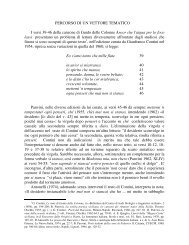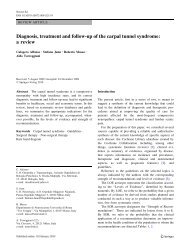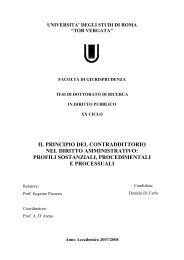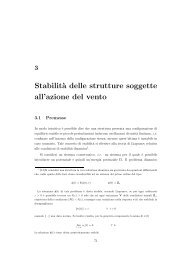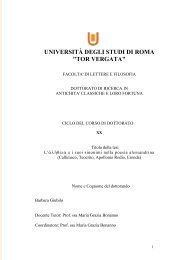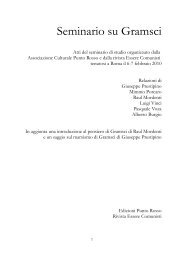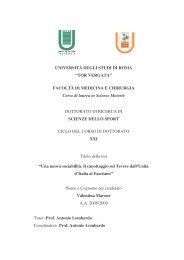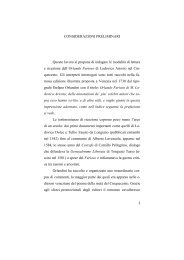Universitā degli studi di Roma “Tor Vergata” - ART - TORVERGATA ...
Universitā degli studi di Roma “Tor Vergata” - ART - TORVERGATA ...
Universitā degli studi di Roma “Tor Vergata” - ART - TORVERGATA ...
You also want an ePaper? Increase the reach of your titles
YUMPU automatically turns print PDFs into web optimized ePapers that Google loves.
Below some the mixing problem within near-, mid- and far-fields is described.<br />
Near-Field and Vertical Mixing<br />
In this section the mixing phenomena near the dosage <strong>di</strong>scharge point is explained. It is<br />
called Near-Field, and it is within a <strong>di</strong>stance from the tracer dosage point of 50 times the channel<br />
width. In the near-field, the tracer is being mixing long x, y and z, if a damage is located within<br />
this part the exfiltrated tracer is not proportional to the exfiltrated water, and the QUEST and<br />
QUEST-C methods cannot be properly applied. If this length becomes negligible compared to<br />
the total investigated length the error due to this part could be neglected. For reducing the effect<br />
of this part either a propeller could be applied or a preliminary investigation of the sewer could<br />
be done by means of CCTV and the dosage point should be located where the sewer walls appear<br />
to be in good con<strong>di</strong>tions.<br />
The near field is the place where the vertical, transverse and longitu<strong>di</strong>nal mixings occur.<br />
The time scale for vertical mixing is shorter than for transverse and longitu<strong>di</strong>nal ones. The<br />
principal mechanism causing the vertical mixing is the turbulence due to velocity shear at the<br />
bed.<br />
Along the vertical <strong>di</strong>rection the velocity profile in turbulent open channel for a nonbuoyant<br />
tracer is:<br />
u x ( y)<br />
1 ⎛ y<br />
= log<br />
⎜ e<br />
u * χ ⎝ yo<br />
⎞<br />
⎟<br />
⎠<br />
Eq. 2.2-18<br />
where ux is the assemble longitu<strong>di</strong>nal mean velocity [m s -1 ]; χ is a constant of proportional<br />
(called Von Karman’s contant); yo is an arbitrary fixed depth; u* is the velocity shear defined as:<br />
u * =<br />
where τo is the bed shear stress [N m -2 ] at yo and ρ �is the water density [g m -3 ].<br />
The shear stress profile is:<br />
τ o<br />
ρ<br />
y<br />
τ t = τ o ( 1−<br />
)<br />
h<br />
Eq. 2.2-19<br />
Eq. 2.2-20<br />
45



